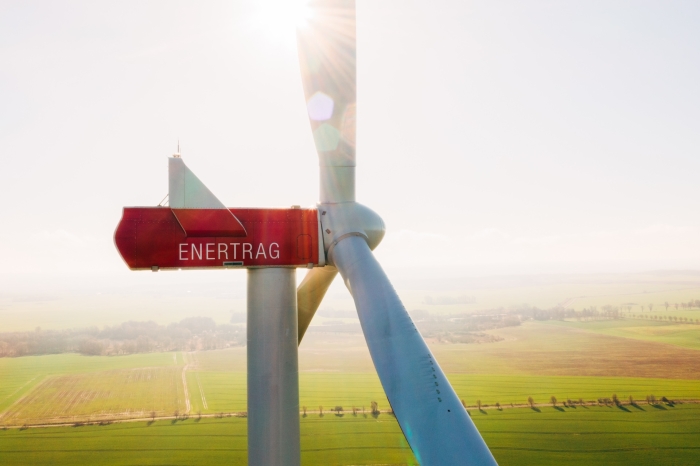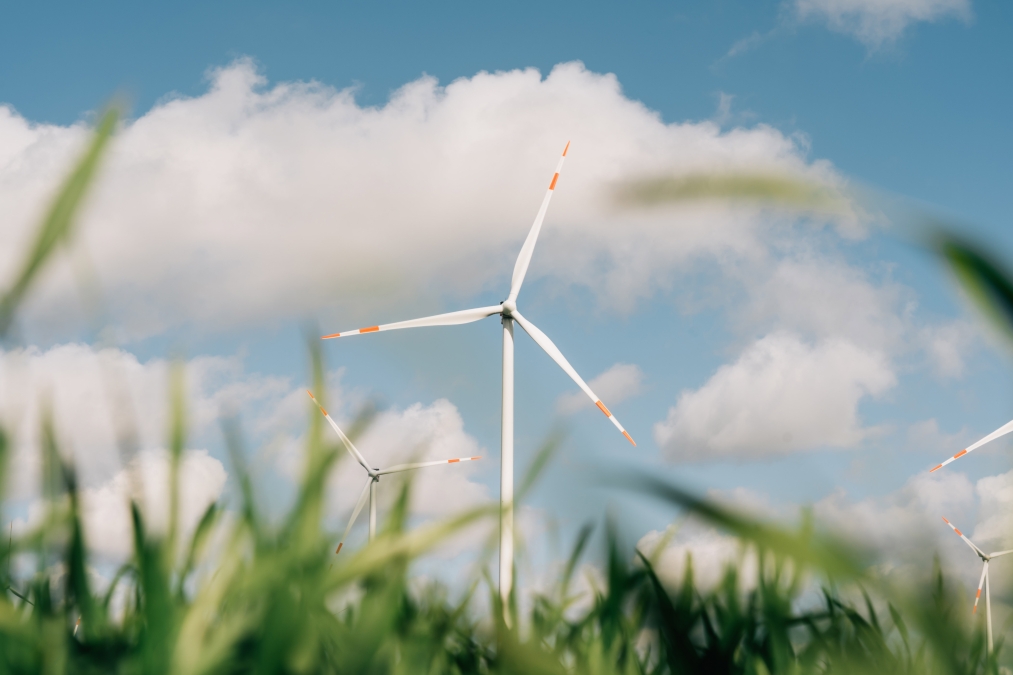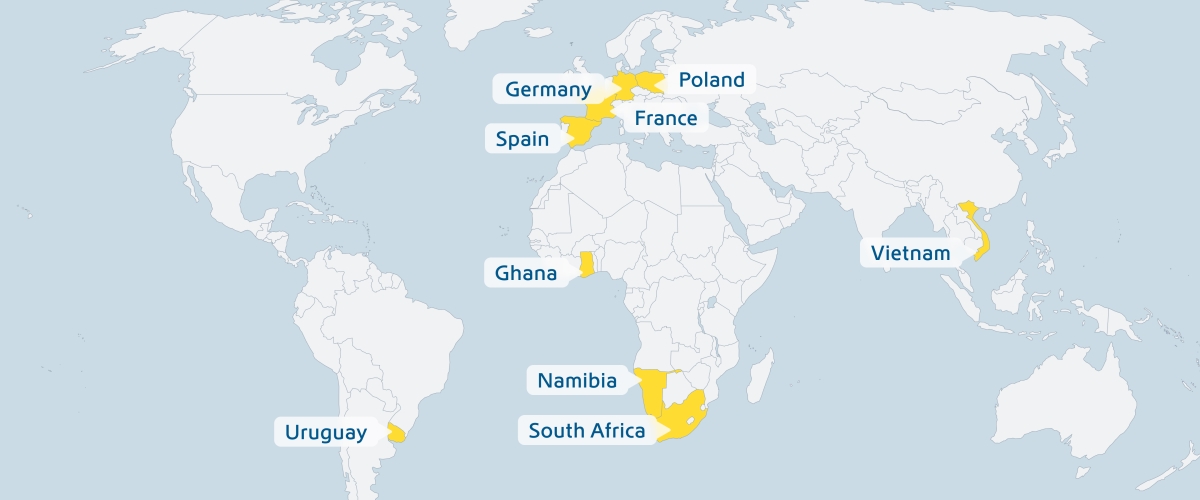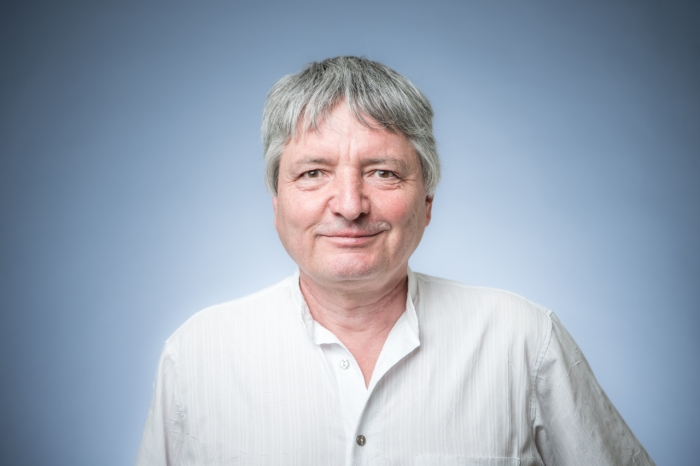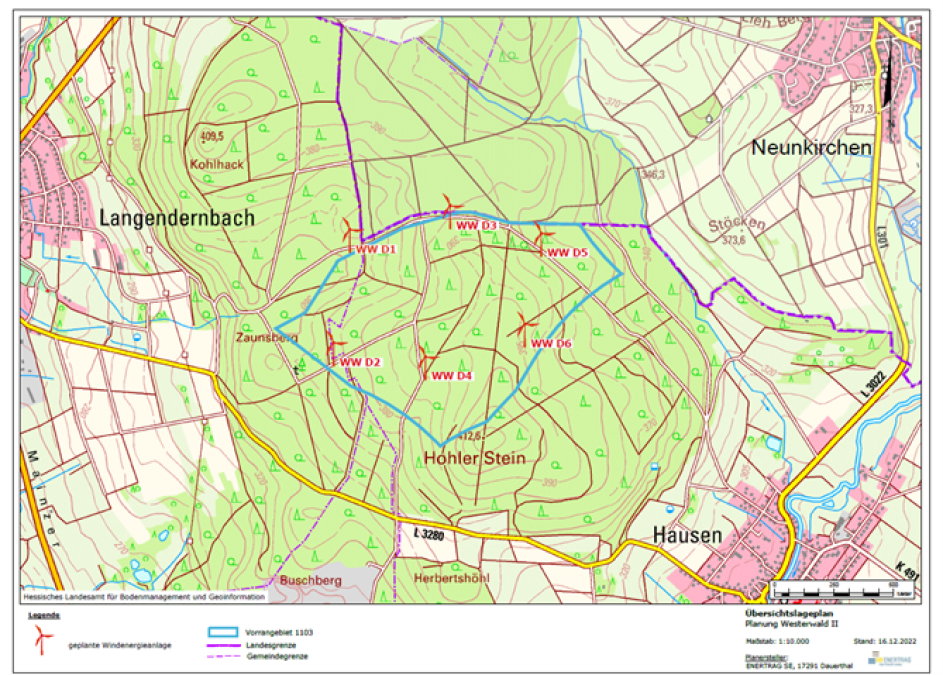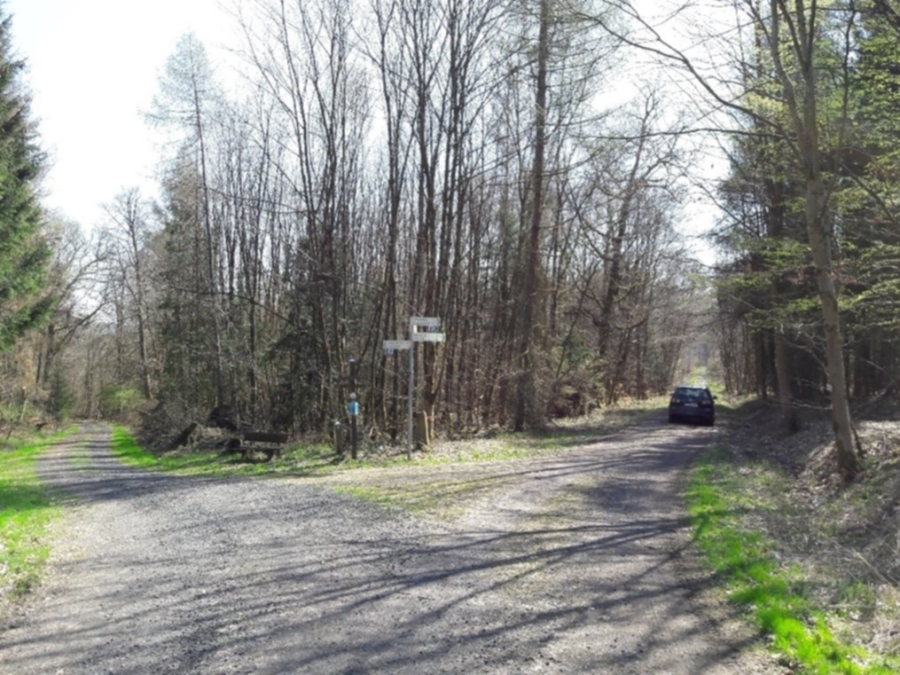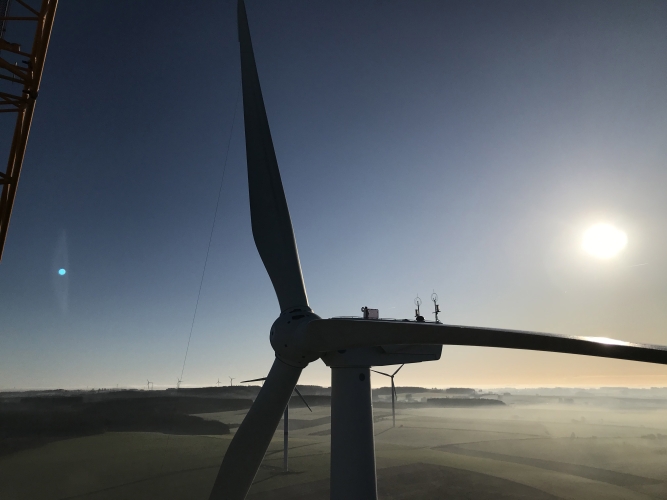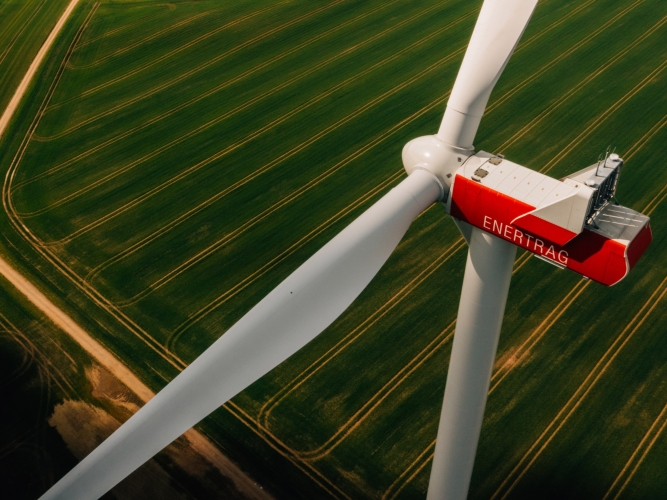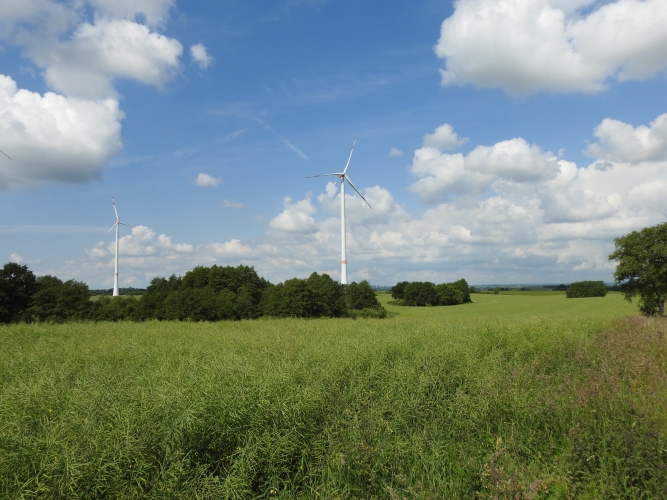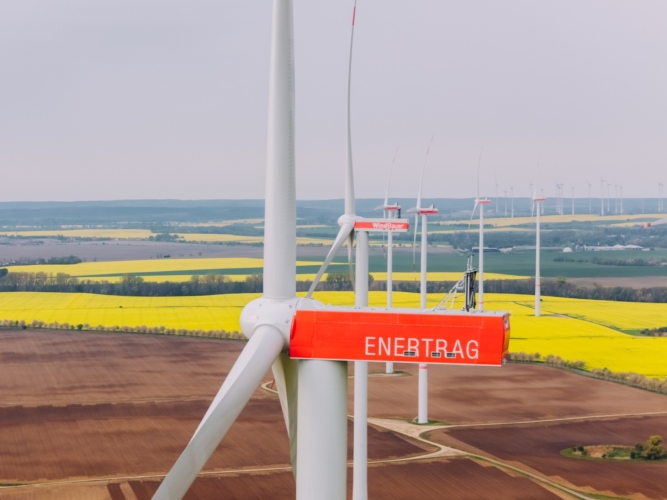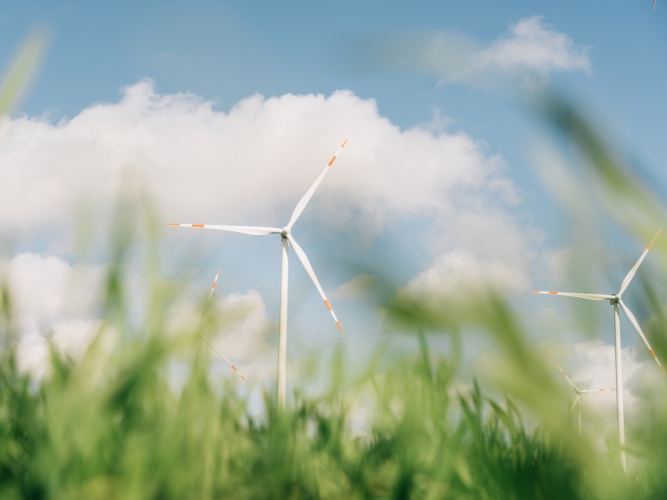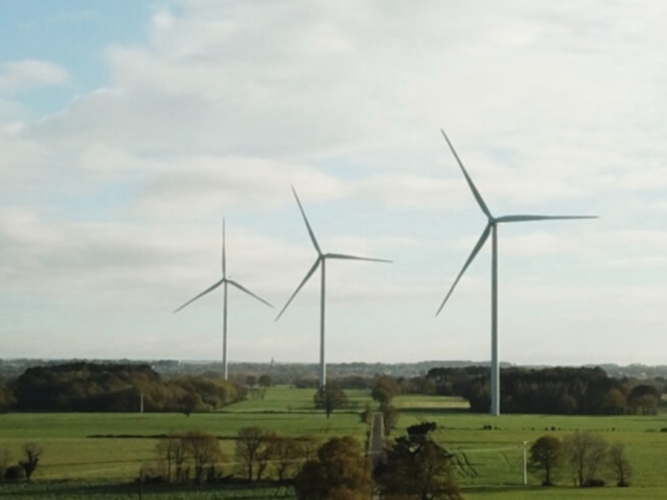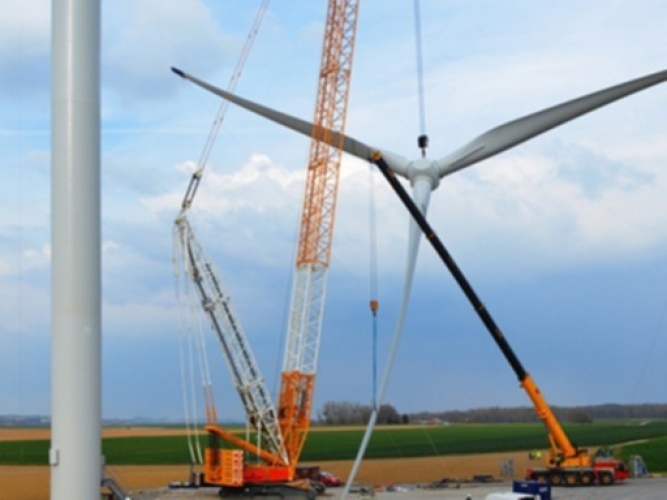Wind energy im Forst
Several dry years, storm events and pest infestations have taken a heavy toll on forests in Germany, and the drought years of 2018 to 2020 in particular meant that in some regions soils dried out to a depth of 1.80 meters, foliage was shed prematurely and the bark beetle was able to spread en masse. In Hesse, forests make up around 42 percent of the state's land area, or around 894,000 hectares. Here, too, some of the forest areas are severely damaged - the results of the 2022 forest condition survey show that the Hessian forest has been in a persistently poor state of vitality since 2019 (Hessian Ministry for the Environment, Climate Protection, Agriculture and Consumer Protection: Forest Condition Report 2022).
Wind energy can provide partial relief. There is therefore much to be said for the use of wind turbines in forests: Wind energy in Germany recently saved 100.9 million tons of greenhouse gases that would otherwise affect the forest (Bundesverband Windenergie 2021: Windenergie im Forst. How wind energy contributes to forest protection). In addition, the compensation of built-up areas through reforestation and forest conversion measures promotes the creation of climate-resistant forest stands.
In the revised State Development Plan (LEP) of 2018, the state government of the CDU and Bündnis 90/Die Grünen committed to promoting the expansion of wind energy in Hesse by providing suitable state-owned forest land. The basis for the construction of wind turbines in forests in Hesse is provided by the third ordinance amending the LEP. According to this, the construction of wind turbines in forests is possible under certain conditions. In the case of this project in Hauser Wald, particular care is taken to ensure that the existing road network is used primarily as access routes and that no young beech stands are cleared.
Photo: Fork in the path in the Hauser Wald priority area: view towards WTG D5 (towards the car)
